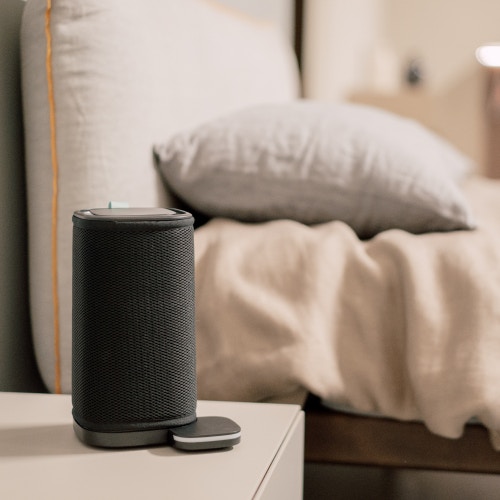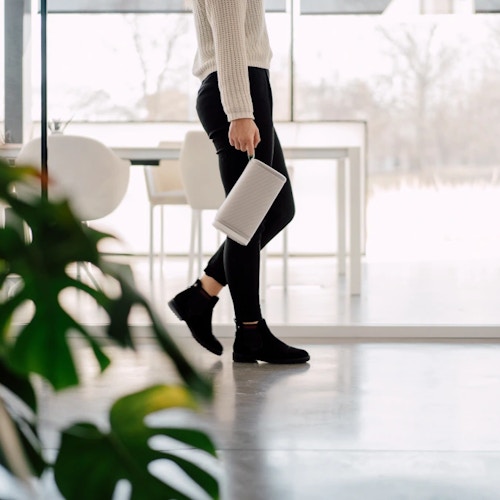
Indoor air quality in the age of hybrid working
→
What employers should consider
Workspaces are not as full as they used to be, and hybrid and remote working are more common and more popular than ever before. Even with incentives (and demands) that people ‘return to the office,’ there seems little evidence that office occupancy rates are getting back to pre-pandemic levels any time soon, or even ever.
Indeed a recent report quoted in The Guardian suggests that the Monday to Friday office occupancy rate across the UK is 29% for 2023 to date, and slightly less in London, compared with typical pre-pandemic levels of 60%-80% (according to data from Remit Consulting).
Home workers have needs as well as office workers, and employers have a duty of care to their home-based colleagues as well as those in the office.
Here we discuss how the pandemic has accelerated the evolution of the workspace and why personal control over the working environment can benefit organizations and workers alike, especially when it comes to the air that we breathe.
Personal, portable air purifiers and monitors empower workers to maintain a healthy working environment, whether at home or in the office and give reassurance to employers that they are fulfilling their obligations to ensure that their staff is safe while they are working.
Accelerated evolution
Even before the pandemic, the nature of office work was changing. There was an increasing shift to creating more purpose-based workspaces that accommodated different styles of activity, such as collaborative working or quiet-focused work. This also led to an increase in the use of non-allocated desks (let alone private offices), so there was no guarantee, or expectation, that an office user would be at the same desk every hour of every day.
The pandemic forced huge numbers of office workers to work from home, and many of them found it preferable. This has led to a rise in hybrid working but has also acted as a catalyst for the evolution of workplace design. A decade’s-worth of change seems to have happened in about 18 months and many employers have completely remodeled their office space as a result: partly to attract workers back to the office by making them more comfortable and homely, and partly to adapt them to new ways of working. However, with all the improvements in workspace design, many offices are still less than half full for several days a week and those workers that do go to the office are often scattered widely around the place.
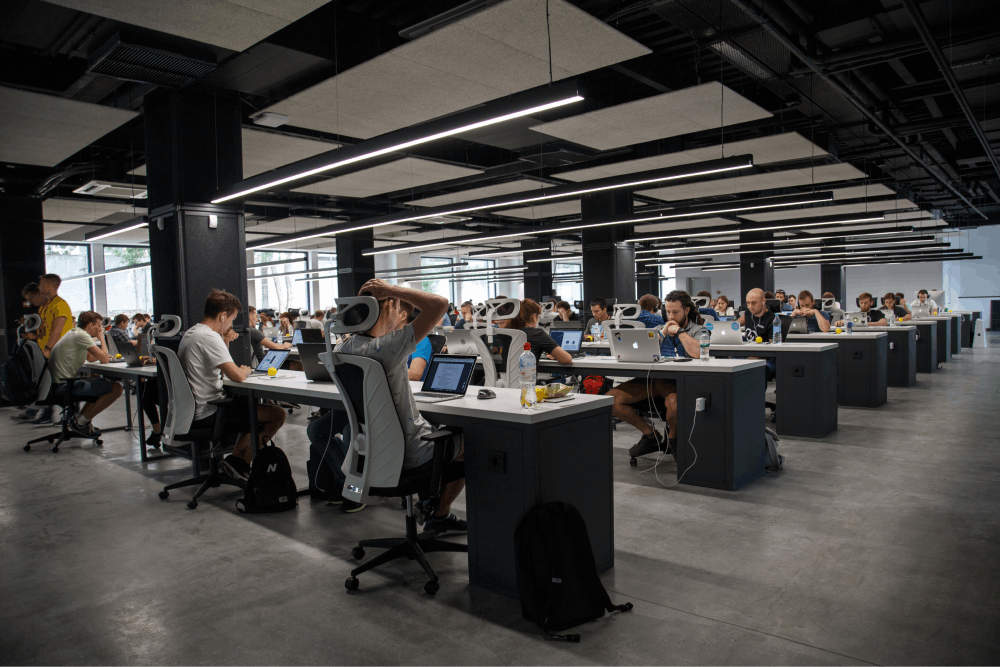
Inviting Big Brother to watch over us
Another element of our lives that has changed considerably over the last 10 years, and especially rapidly in the last five, is the use of technology to record aspects of our health and well-being. The first Apple watch was launched as recently as 2015 and, as well as being a smart timepiece, it can track many aspects of personal health and fitness. The data generated are available for detailed analysis and lifestyle changes can be encouraged.
Smart watches and smart fitness devices provide a minute-by-minute history of activity and health – including data about health whilst at work. These devices can be used to provide objective evidence of the health of employees in an organization.
And employers have an obligation to ensure that their employees are working in a safe and healthy environment – wherever they work.
Other smart, connected devices are also found in the workplace, providing valuable data in real-time. These include occupancy sensors and, importantly for wellbeing as well as building management, environmental sensors such as air quality monitors.
The pandemic also increased awareness of indoor air quality, especially once it was recognized that Covid was transmitted in the air. Air monitoring is a useful tool here. For example, carbon dioxide concentration is a good proxy measurement of ventilation rate – the lower the CO2, the more the air is being refreshed from outside. Higher ventilation rates clearly result in the concentration of airborne pathogens being reduced. However, CO2 is not the only thing worth measuring – increasing ventilation might reduce CO2 and virus concentration, but it could mean bringing in other pollutants from outside, which also need to be measured and controlled.
Some recent research has shown a relationship between relative humidity, CO2, temperature, and virus transmission – this has led to an interesting algorithm that has been deployed on some air monitors that give an indication of Covid risk ⁽¹⁾ (see this Whitepaper, published by RESET).

Creating wellness instead of fixing problems
Alongside the development of health and wellness tracking devices, there has been a proliferation of voluntary standards designed to encourage and demonstrate how buildings impact the environment and the people that use them.
The WELL building standard is one of the best known. It rates a building’s ability to sustain and promote well-being across a wide range of parameters. Since launching in 2014, many thousands of buildings around the world have been certified. Other standards include Fitwel and the Living Building Challenge. A very useful comparison of 15 environmental and well-being standards can be found here.
However, these standards primarily relate to how a building works rather than how people work. There is an overlap, but the standards have not yet caught up with hybrid, or completely remote, ways of working.
How can we know whether our working environment is healthy?
When offices were predictably occupied, it was very easy to ensure that the working environment met legal and voluntary standards. The environment rarely changed and, if it did, it changed in a predictable and manageable way. Data were collected and facilities managers were able to control the environment of whole buildings from their computers.
This is still, of course, possible. But the control of whole buildings, or even fixed zones within buildings, is a bit of a blunt instrument when you don’t know where your employees are when they will be in the building, or what they will be doing whilst they are there. At worst, it means making sure that the whole building is lighted, heated, and air-conditioned just in case someone wants to use part of it. This is potentially wasteful of energy and resources.
Obviously, smart technology, such as occupancy sensors and light sensors can help, but even then, it is often the case that a large zone in a building is ‘switched on’ even if only 20% of the desks are occupied, and the occupiers of those desks scatter themselves as far and wide as possible.
In these cases, the building provides a safe working environment, even if the resources deployed are used inefficiently and expensively, but how can an organization discharge its health and safety obligations to remote workers – especially those that are new to remote working, or doing work that was previously wholly office based?

Empowerment
Over recent years, a lot of interesting research carried out in the UK and The Netherlands ⁽²⁻³⁾ has demonstrated that empowerment of the working environment yields huge benefits to workers and their employers.
Data can be very empowering. As discussed earlier, wearable technology and connected devices provide a huge amount of real-time data about health and the environment.
Indoor air quality monitors can be very empowering. If they are visible and show that there is something not quite right about the air, then the evidence required to make a complaint to the facilities help desk is provided.
As well as the office worker seeing the data, the facilities help desk should be able to see the same information. Not only that but there will be a record of the data, so trends can be observed and potential problems identified and fixed quickly.
Sometimes, people are reluctant to complain, for fear of being regarded as moaners. However, a dispassionate air quality monitor can empower and embolden people to encourage their employers to manage the environment better, or even hand over control, where practical, to the users of the space concerned.
Where organizations are struggling to retain and recruit, such a visual demonstration of the provision of a decent quality working environment is very helpful.
An air quality monitor might be one way to resolve arguments between facilities managers and building users – the decision to open a window can be validated by an improvement in the particular indoor air quality parameters that mattered to the user at the time.
This applies to home-based workers as well as those permanently in the office. Although the solution to the problem may not be in the hands of the facilities manager, it can still be facilitated by the employer.
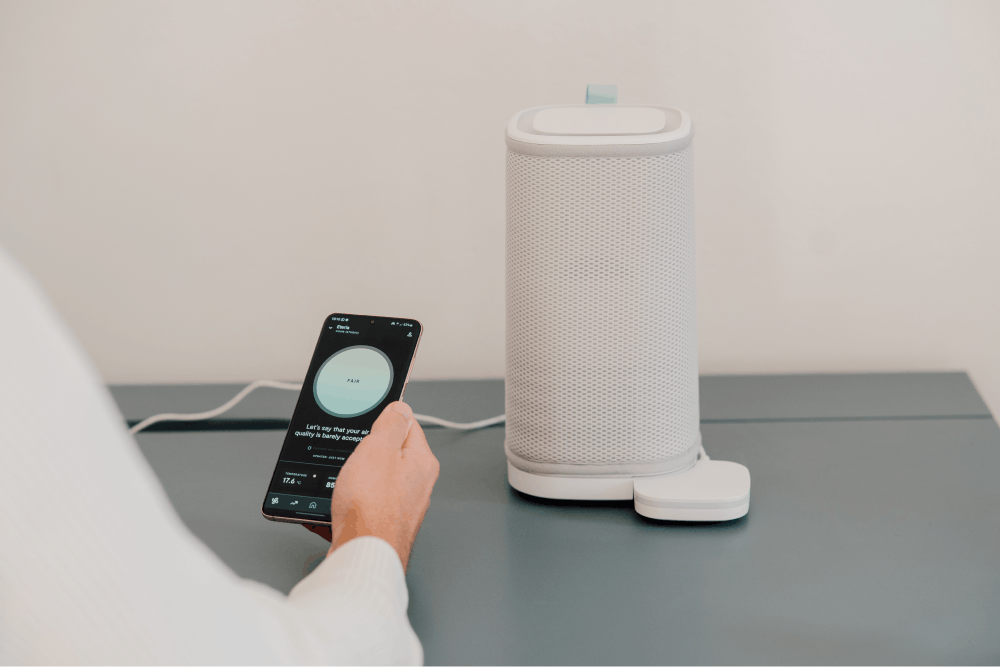
Taking the solution with you
Portable, personal air purifiers, such as Vitesy’s Eteria, offer employers and their staff the ability to manage one very important aspect of their working environment – the air they breathe.
It is a low-power personal air purifier that creates a ‘bubble’ of cleaned air around the user, regardless of the size of the room. Instead of cleaning the air in the whole space, it is possible to optimize the quality of the air just where it is needed – around the person. Eteria uses information from the smart air quality monitor module to control the power of the purifier unit when it is connected.
Important indoor air pollutants can be removed or reduced below safety thresholds in approximately one hour, and the low air velocities mean less noise.
The air monitor component is very small, powered through a USB cable, and is separate from the purifier. The purifier only works when connected to the monitor, but the monitor works all the time, providing data in real-time and accessible through an app.
This means that it is possible to have a monitor on the desk at home as well as monitors on desks in the office – whether they are assigned workspaces or hot desks.
The purifier unit is very lightweight and can fit in a small bag or briefcase, making it easy to transport between home and the office.
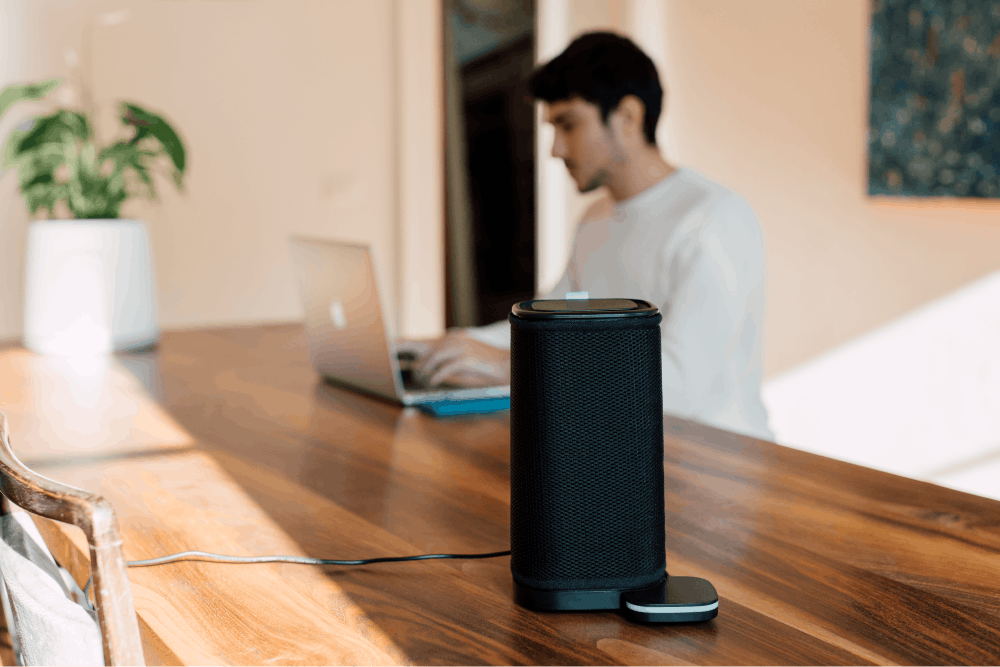
Author: Kenneth Freeman
━━━━━━━━━━━━━━━━━━━━━━━━━━━━━━━━━━━━━━━━━━━━━━━━━━━━━━━━━━━
(1) Raefer Wallis, Anjanette Green, Bela Nigudkar, Shichuan Xi, Stanton Wong. (2022) RESET Viral Index v1.1.
(2) Knight, C., Postmes, T., & Haslam, S. A (2010). The Relative Merits of Lean, Enriched, and Empowered Offices: An Experimental Examination of the Impact of Workspace Management Strategies on Well-Being and Productivity. Journal of Experimental Psychology: Applied Vol. 16, No. 2, 158–172.
(3) Nieuwenhuis, M., Knight, C., Postmes, T., & Haslam, S. A. (2014, July 28). The Relative Benefits of Green Versus Lean Office Space: Three Field Experiments. Journal of Experimental Psychology: Applied.
